| Share |  |
 | |||
So What is the Problem with Grains?
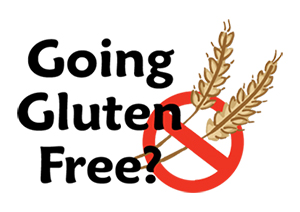 It seems more and more that you hear about people who are eating “gluten or grain-free”. Websites, blogs, recipe and health books abound advocating grain-free eating while “gluten-free” menu options are becoming increasingly available in many restaurants. Even though gluten or grain-free foods were once only carried by health food or specialty stores, just about any grocery store today offers at least a small selection of these increasingly-in-demand foods.
It seems more and more that you hear about people who are eating “gluten or grain-free”. Websites, blogs, recipe and health books abound advocating grain-free eating while “gluten-free” menu options are becoming increasingly available in many restaurants. Even though gluten or grain-free foods were once only carried by health food or specialty stores, just about any grocery store today offers at least a small selection of these increasingly-in-demand foods.
The prevalence of celiac disease is four times greater now than it was 50 years ago, affecting about one in 100 people. People frequently suffer from the symptoms for years before they are diagnosed with this disease. And as indicated by the University of Chicago Celiac Disease Center, as many as 97 percent never are properly diagnosed. Many others who test negative for celiac still suffer many similar type symptoms due to gluten intolerance or sensitivity. With other people, gluten is not the problem at all. Rather, it is a wheat sensitivity or allergy.
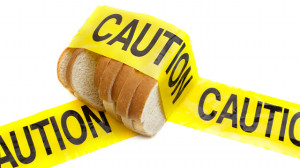 But even individuals who do not fit any of these categories discover that cutting out grains (especially wheat) can result in remarkable health improvements. Relief from digestive problems, fatigue, mood swings, brain fog, stiffness, joint pain and more are often experienced. People with weight problems or blood sugar imbalances also find that stubborn pounds drop off and blood sugar levels normalize when they greatly reduce or eliminate grains.
But even individuals who do not fit any of these categories discover that cutting out grains (especially wheat) can result in remarkable health improvements. Relief from digestive problems, fatigue, mood swings, brain fog, stiffness, joint pain and more are often experienced. People with weight problems or blood sugar imbalances also find that stubborn pounds drop off and blood sugar levels normalize when they greatly reduce or eliminate grains.
Living in a Grain-based Culture
The idea that eating grains could present such an obstacle to health may seem strange to the average person living in this country. Whether it is cereal, toast, bagels, pancakes, donuts or pastries for breakfast or sandwiches, subs, wraps, pizza, and bun-enclosed burgers or hot dog for lunch or dinners that include pasta, rolls or breadsticks topped off with a slice of cake or pie; no one can deny that the typical American diet revolves around grains. And that is little wonder, considering the way grains are highly touted as incredibly healthy and vital for a balanced diet by media sources, traditional dieticians and health associations.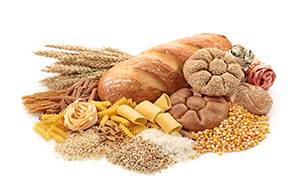
In fact, the most commonly consumed grain (wheat) makes up 75% of the carbohydrates the average American consumes. As one of the most heavily government-subsidized crops, wheat provides a cheap ingredient for food manufacturers and is frequently a main ingredient in food products that line the interior aisles of grocery stores. At one time, the USDA placed grains at the base of the original Food Pyramid, encouraging Americans to freely eat six to eleven servings per day.
How Grains Have Changed
A number of factors may account for why consuming significant amounts of grains today may not be the healthiest choice. Just the fact that people who experience unresolved health issues gain relief from eliminating wheat or gluten from their diets should make us consider why this would be and if something is different about the grains we consume today. Let’s start by taking a closer look at how grains have changed over the years and the impact of those changes on our health.
Modifications and Alternations
During the time of Jesus, only three major types of wheat existed along with a few simple, non-hybrid varieties of grains like barley, millet, and rye. Today there are over 25,000 varieties, the majority of which are hybridized, crossbred and genetically engineered by agricultural scientists for the purpose of increasing yield per acre (ten times what it used to be), making plants more resistant to environmental conditions such as heat, drought or pathogens and improving baking characteristics. These new varieties now comprise approximately 90 percent of all the wheat grown by farmers around the world. A new strain of wheat developed in the sixties called “dwarf wheat” is the most widely used in this country, replacing ancient varieties such as Einkorn or Emmer for the most part.* 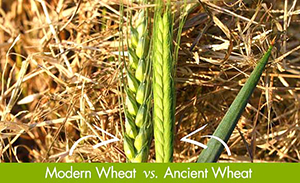
Land devoted to the growth of genetically modified crops in America has skyrocketed to more than 70 million since 1996. Half of all grocery items contain gene-altered ingredients. Unfortunately, our label laws (unlike Europe) do not require that these GM ingredients be identified. Nor were studies conducted to determine their effect on human health before utilizing them in our food supply.
Splicing genes from one organism onto the genes of another is not without repercussions. Genetically modified grains, in particular, contain foreign proteins that are highly irritating to the digestive tract, which can turn non-allergenic foods into allergy-producing foods.
* Special Note: Einkorn wheat berries and flour are still obtainable from a couple of companies and are known to cause fewer digestive problems than the wheat commonly used in commercial products.
Different Nutritional Composition
Changes in the nutritional make-up of grains also result from cross-breeding and genetic alternations. The most widely used modern high-yield dwarf wheat contains a far greater percentage of complex carbohydrates with less protein than ancient wheat. Protein content in modern wheat has dropped to less than 15 percent while the carbohydrate content now averages 70 percent. An even greater disadvantage is the fact that 75 percent of those carbohydrates consists of amylopectin-A, a type of starch that rapidly converts to glucose and dramatically increases blood sugar and stimulates appetite. Minerals, including important ones such as selenium, zinc and magnesium are also significantly reduced in modern wheat.
Highly Processed
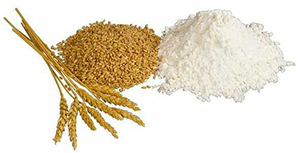 Only after the late 1800’s did mills began operation to make refined flour accessible to the average population. Before that time, the type of flour used in baked goods and food products today was non-existent. Refining processes not only remove the bran and germ (and more than a dozen nutrients along with them!) but also increase the surface area of the grain starch by as much as 10,000 times, leaving a high-starch, low-fiber and nutritionally deplete food. Keep in mind that even a product labeled “whole grain” can contain as much as 49 percent processed grains.
Only after the late 1800’s did mills began operation to make refined flour accessible to the average population. Before that time, the type of flour used in baked goods and food products today was non-existent. Refining processes not only remove the bran and germ (and more than a dozen nutrients along with them!) but also increase the surface area of the grain starch by as much as 10,000 times, leaving a high-starch, low-fiber and nutritionally deplete food. Keep in mind that even a product labeled “whole grain” can contain as much as 49 percent processed grains.
Another processing method, called extrusion, destroys or renders unusable many of the naturally occurring nutrients and enzymes in cereal grains. Extrusion’s high heat and high pressure form the grain flour into the little puffs, flakes, O’s and other shapes of dry cereal. In the process, amino acid structures are altered, creating potentially harmful compounds foreign to the body.
Increased “Anti-Nutrients”
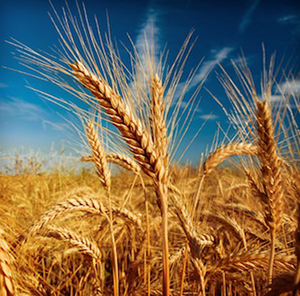 While modern whole grain products certainly trump ones made from refined flours, they are not without drawbacks. In the process of genetically redesigning plants, substances often referred to as “anti-nutrients” were greatly enhanced to help the new varieties better resist disease and predators. Anti-nutrients in grains are nature’s way of protecting seeds until the conditions are right for them to sprout and grow. While this built-in defense system benefits the plants, it prevents or disrupts the proper digestion and absorption of certain nutrients within the foods when consumed by humans. Effects from the following anti-nutrients increase when diets are high in whole grains from modern wheat and other grains:
While modern whole grain products certainly trump ones made from refined flours, they are not without drawbacks. In the process of genetically redesigning plants, substances often referred to as “anti-nutrients” were greatly enhanced to help the new varieties better resist disease and predators. Anti-nutrients in grains are nature’s way of protecting seeds until the conditions are right for them to sprout and grow. While this built-in defense system benefits the plants, it prevents or disrupts the proper digestion and absorption of certain nutrients within the foods when consumed by humans. Effects from the following anti-nutrients increase when diets are high in whole grains from modern wheat and other grains:
- Phytates - phytic acid (the storage form of phosphorus found in the bran of grains as well as the outer hull of seeds and nuts) is an indigestible, mineral binding compound. In plants, the enzyme phytase neutralizes phytic acid to release phosphorus needed to support germination and growth. But since humans don’t make enough phytase to handle very much phytic acid, it binds to important minerals like calcium, magnesium, copper, iron and zinc in the intestinal tract and prevents their absorption. Besides grabbing onto important minerals, phytates also inhibits the action of certain digestive enzymes.
- Lectins – lectins are sugar-binding proteins found in grains (as well as legumes, dairy and nightshade vegetables) that resist digestive enzymes and secretions. When lectins are not broken down in the digestive process and enter the bloodstream through breeches in the gut wall, they can bind to cells and tissues and damage them in the process. The immune system then sends white blood cells to attack the lectin-bound tissue and destroy it in a type of autoimmune response. A particular lectin found in wheat (known as "wheat germ agglutinin" or WGA), is high in certain amino acids that are nearly identical to a particular protein found in the lining of the digestive tract, blood vessels, joint surfaces and cartilage. When lectins bind to intestinal cells, for instance, they alter gut permeability, reduce absorptive capacity, and disturb the balance of intestinal flora. As they cross-react with food antigens, food sensitivities develop that trigger immune system reactions. Repercussions from these reactions create or worsen all types of symptoms and conditions such as allergies, arthritis, asthma, chronic fatigue, fibromyalgia, neurological conditions, and many more. For those who are genetically predisposed, just one slice of wheat bread contains enough WGA to stimulate the synthesis of pro-inflammatory chemicals in the body.
Lack of Proper Preparation
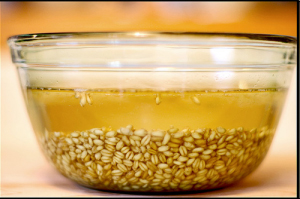 In traditional cultures where grains were regularly consumed, practices were employed to help minimize the problematic anti-nutrients in grains. When grains are properly prepared by soaking, sprouting or fermenting before consuming, phytic acid and enzyme inhibitors are broken down into simpler components to make the nutrients more digestible and bioavailable for absorption. Although the harmful properties are not altogether eliminated, these methods of preparation can reduce them and improve the nutritional profile of the grain product.
In traditional cultures where grains were regularly consumed, practices were employed to help minimize the problematic anti-nutrients in grains. When grains are properly prepared by soaking, sprouting or fermenting before consuming, phytic acid and enzyme inhibitors are broken down into simpler components to make the nutrients more digestible and bioavailable for absorption. Although the harmful properties are not altogether eliminated, these methods of preparation can reduce them and improve the nutritional profile of the grain product.
In times past, much of this type of preparation occurred naturally since grains were normally left in the fields before thrashing. Exposure to warm, moist conditions encouraged the sprouting and fermentation process. The fact that grains today rarely undergo any of these processes or preparation methods may contribute largely to the increase in digestive disorders and other health issues associated with grain consumption.
Increase in Gluten
Gluten is a combination of proteins found primarily in the mature seeds of grains such as wheat, rye, barley, oats, spelt, kamut and tritricale. When two proteins that make up gluten (gli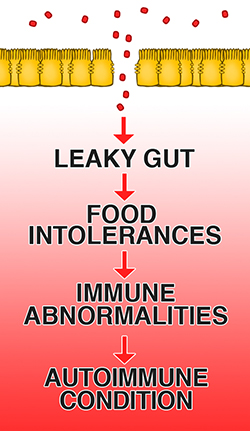 adin and glutenin) combine with liquid, a sticky, glue-like substance forms that gives dough its structure and elasticity.
adin and glutenin) combine with liquid, a sticky, glue-like substance forms that gives dough its structure and elasticity.
With all of the cross breeding and hybridization of grains, the gluten content of grains has increased by as much as 50 percent in some varieties. The protein content of modern wheat is approximately 80 percent gluten.
Although its adhesive properties work well to hold baked goods together, proteins in gluten are, unfortunately, very hard-to-digest and irritating to the gut. When they become stuck beneath layers of intestinal cells, partially digested molecules stimulate inflammation. Besides interfering with the absorption of nutrients, damage to the intestinal wall over time produces a condition known as “leaky gut syndrome”. Another protein in gluten (zonulin) contributes to the problem, widening the gap in the tight junctures between intestinal cells. Protein and other food molecules then pass through these gaps into the bloodstream. The immune system then perceives them as foreign invaders, produces antibodies against them and launches an assault.
When the body loses its ability to distinguish invading proteins from those that comprise its own tissues, organs and glands, tissue damage and destruction occur. 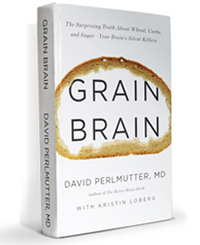 This continual overreaction of the immune system can lead to the development of autoimmune diseases such as celiac, lupus, multiple sclerosis, Type 1 diabetes, thyroiditis, Sjögren's syndrome, rheumatoid arthritis, psoriasis, irritable bowel syndrome, iron deficiency, microscopic colitis and others linked in studies with gluten sensitivity or intolerance. Approximately 30% of Americans are sensitive to gluten. Some researchers estimate that as many as 80% are genetically predisposed towards gluten sensitivity.
This continual overreaction of the immune system can lead to the development of autoimmune diseases such as celiac, lupus, multiple sclerosis, Type 1 diabetes, thyroiditis, Sjögren's syndrome, rheumatoid arthritis, psoriasis, irritable bowel syndrome, iron deficiency, microscopic colitis and others linked in studies with gluten sensitivity or intolerance. Approximately 30% of Americans are sensitive to gluten. Some researchers estimate that as many as 80% are genetically predisposed towards gluten sensitivity.
Gut-triggered inflammation can also activate immune cells in the brain, adversely affecting areas that govern memory, behavior, depression, anxiety and certain types of tremors. Brain inflammation stemming from immune activation is thought to be linked with neurodegenerative diseases such as Alzheimer’s, Parkinson’s and ALS (Lou Gehrig’s disease). Dr. David Perlmutter, a neurologist and author of “Grain Brain”, relates numerous studies, in addition to personally witnessed cases, in which symptoms of people with severe neurological disorders significantly improved or were eliminated by adhering to a gluten-free diet.
Grain’s Impact on Cravings, Weight and Blood Sugar
Eating grains can be problematic even if people do not experience gluten sensitivity or other symptoms and conditions linked with modern wheat. Since grains are so overabundant and overconsumed in our society, people often do not realize how biologically addictive they are since they are rarely without them for any length of time.
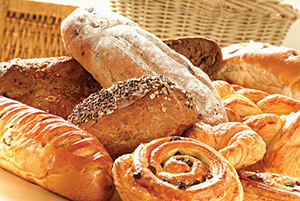 Wheat and other grains can be very difficult to remove from the diet due to their appetite-stimulating effects. Polypeptides (small proteins) in grains from gluten penetrate the blood-brain barrier and bind to morphine receptor sites just like opiate drugs. The exorphins (externally-derived morphine-like compounds) produced create a pleasurable “high” that stimulates appetite, decreases metabolism, alters mood and behavior and can even cause withdrawal symptoms if discontinued. Many of these affects are due to deficiencies of neurotransmitters like serotonin or dopamine created by these exorphins. In fact, clinical trials have shown that these very effects from wheat can be blocked using the same drug that helps wean drug addicts off heroin and other opiates.
Wheat and other grains can be very difficult to remove from the diet due to their appetite-stimulating effects. Polypeptides (small proteins) in grains from gluten penetrate the blood-brain barrier and bind to morphine receptor sites just like opiate drugs. The exorphins (externally-derived morphine-like compounds) produced create a pleasurable “high” that stimulates appetite, decreases metabolism, alters mood and behavior and can even cause withdrawal symptoms if discontinued. Many of these affects are due to deficiencies of neurotransmitters like serotonin or dopamine created by these exorphins. In fact, clinical trials have shown that these very effects from wheat can be blocked using the same drug that helps wean drug addicts off heroin and other opiates.
Increased consumption of today’s wheat has significantly contributed to the tripling of the obesity rate over the last 50 years. Unlike most vegetable carbohydrates, processed grains quickly break down to glucose molecules that significantly raise blood sugar and stimulate a surge of insulin from the pancreas. Insulin stores as fat whatever glucose is not immediately used to produce energy within the cell or to replenish stores of glycogen in the liver.
One reason people tend to crave breads and other baked goods made from wheat is the inevitable crash in blood sugar that takes place when excessive insulin release drives blood sugar levels down too low. 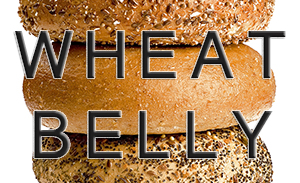 These drops in blood sugar trigger the kind of hunger and cravings that often compel a person to eat more high-carb foods. Consuming these types of carbs on a regular basis floods the blood stream with so much insulin that cells eventually tune out its efforts to usher more glucose inside. Once insulin resistance sets in, losing accumulated fat becomes extremely difficult.
These drops in blood sugar trigger the kind of hunger and cravings that often compel a person to eat more high-carb foods. Consuming these types of carbs on a regular basis floods the blood stream with so much insulin that cells eventually tune out its efforts to usher more glucose inside. Once insulin resistance sets in, losing accumulated fat becomes extremely difficult.
While the increased fiber in products made from whole wheat gives it some advantage over white flour products, many are unaware that the glycemic index of typical whole wheat bread is nearly identical to or higher than white bread. The glycemic index of both whole wheat and white bread exceeds table sugar (unless the bread is the difficult-to-squeeze kind made mostly of unprocessed grain kernels or berries). According to Dr. William Davis, author of “Wheat Belly”, two slices of whole wheat bread raise blood sugar higher than six teaspoons of pure sugar. Only breads made with dried starches such as cornstarch, rice starch, potato starch, and tapioca starch spike blood sugar more (unfortunately, you will find these very ingredients in many “gluten-free” bread and other grain products).
Another way wheat may cause weight gain and hinder weight loss is the fact that wheat lectins are known to bind to leptin receptors and block the signals it would normally send (leptin is a hormone that lets the brain know the body is full so it can reduce hunger in order to prevent overeating). Since today’s wheat is higher in lectins, eating wheat products may increase appetite and leave a person unsatisfied and wanting more. Avoiding grains can help with weight loss by preventing interference with leptin’s role in reducing hunger and increasing fat burning.
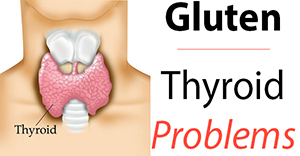 Gluten in wheat may be partly responsible for hindering weight loss by slowing down metabolism due to low thyroid function. Due to similarities between the two, immune system antibodies produced in reaction to protein molecules in gluten can confuse these molecules with thyroid tissue. The resulting immune system attack impairs thyroid function, meaning fewer calories are burned and more are stored as fat. People who have this type of thyroid disorder have 12 times the rate of gluten intolerance as the general population.
Gluten in wheat may be partly responsible for hindering weight loss by slowing down metabolism due to low thyroid function. Due to similarities between the two, immune system antibodies produced in reaction to protein molecules in gluten can confuse these molecules with thyroid tissue. The resulting immune system attack impairs thyroid function, meaning fewer calories are burned and more are stored as fat. People who have this type of thyroid disorder have 12 times the rate of gluten intolerance as the general population.
Are Grains Really that Healthy?
Those who advocate grains as the foundational component of our diet claim that grains provide many of the essential nutrients and energy our bodies need to stay healthy and strong. Despite these claims, the reality is that their nutritional content is not all that impressive.
Generally speaking, grains contain little vitamin C, no vitamin A and no beta-carotene. Not only are they poor sources of calcium but they also can displace calcium from other food sources. Excess grain consumption can actually contribute to deficiencies of certain B vitamins and inhibit the metabolism and utilization of other key vitamins and minerals. Grain’s fatty acid profile (high in omega-6 fatty acids and low in omega-3) contributes to inflammation promoting essential fatty acid imbalance. Granted, grains are “enriched” with certain key nutrients. However, the benefit of synthetic nutrients in an isolated form is limited as they are not easily assimilated by the body.
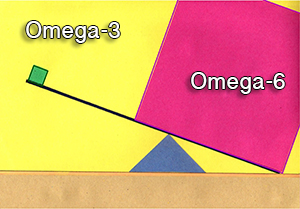 The truth is that you can obtain a much higher and more favorable nutritional profile by eating unprocessed foods like vegetables, fruits, proteins and healthy fats that do not share the drawbacks of grains. The best source of carbohydrates is non-starchy vegetables as they provide steady blood sugar and insulin levels due to their low glycemic load plus they are rich in fiber, antioxidants and phytonutrients known to protect against degenerative diseases. A real concern with eating too many grain products is that less room is left for these more nutritious options.
The truth is that you can obtain a much higher and more favorable nutritional profile by eating unprocessed foods like vegetables, fruits, proteins and healthy fats that do not share the drawbacks of grains. The best source of carbohydrates is non-starchy vegetables as they provide steady blood sugar and insulin levels due to their low glycemic load plus they are rich in fiber, antioxidants and phytonutrients known to protect against degenerative diseases. A real concern with eating too many grain products is that less room is left for these more nutritious options.
Choices to Make
Each person is the best manager of their own health and needs to make the dietary choices that are right for their body. My purpose in presenting this information is to increase your awareness of how today’s grains and grain products that we often consume in abundance have changed in ways that can adversely affect health so that you can make more informed decisions.
Certainly everyone could benefit healthwise from eliminating refined grains (white bread products, white rice, etc.) from their diet. Others may find that removing wheat from their diet relieves nagging symptoms and helps them lose weight.  Employing methods of soaking, sprouting or fermenting grains may be enough to resolve some people’s digestive issues that grains aggravate. Still others may discover that they are gluten sensitive or intolerant and should avoid all gluten containing grains. Those who find that they have celiac disease may need to strictly avoid all forms of gluten in even the minutest amounts for the rest of their life.
Employing methods of soaking, sprouting or fermenting grains may be enough to resolve some people’s digestive issues that grains aggravate. Still others may discover that they are gluten sensitive or intolerant and should avoid all gluten containing grains. Those who find that they have celiac disease may need to strictly avoid all forms of gluten in even the minutest amounts for the rest of their life.
While many can continue to freely eat non-gluten grains like rice, quinoa, amaranth, millet and others, even these grains contain components that can be too irritating for some people with significantly damaged intestinal walls. Special diets designed to restore intestinal health may be required for these people (see my article on leaky gut syndrome for more information).
If you would like to know more about whether gluten, wheat or grains in general may be contributing to health or weight loss issues you deal with, I would encourage you to read the information below to learn how you can find out. For those who decide they may want or need to reduce or eliminate wheat, gluten or grains in general from their diet, I also include some information about gluten and grain-free options.
Sources:
Going against the Grain by Melissa Diane Smith, DIPL. NUTR.
Wheat Belly by William David, M.D.
Digestive Wellness by Elizabeth Lipski, PhD, CCN, CHN
Grain Brain by David Perlmutter, M.D.
The No-Grain Diet by Dr. Joseph Mercola
HOW TO TELL IF YOUR BODY IS SENSITIVE OR INTOLERANT TO WHEAT OR GLUTEN
If you currently eat bread or other foods made with wheat flour or other gluten grains on a regular basis, check over the indicators listed below and see if you identify with any of them.
- You experience any of the symptoms commonly associated with celiac disease (although there can be as many as 300 symptoms of celiac, this link will take you to a list of the most common ones)
- You experience any symptoms of impaired digestion (gas, bloating, abdominal pain or cramping, indigestion, etc.)
- You experience any other unexplained or unresolved symptoms (i.e., brain fog, extreme fatigue, migraine headaches, dizziness or feeling off balance, joint inflammation, swelling or pain, hormone imbalance - PMS, PCOS or unexplained infertility, or mood issues such as anxiety, depression or mood swings)
- You have been diagnosed with an autoimmune disease (i.e. Hashimoto’s thyroiditis, rheumatoid arthritis, ulcerative colitis, lupus, psoriasis, multiple sclerosis or others)
- You have been diagnosed with fibromyalgia or chronic fatigue syndrome (an indication that a conventional doctor cannot pinpoint the cause of your fatigue or pain)
- You carry excess weight that you find difficult to lose
- You experience any type of blood sugar imbalance (hypoglycemia, insulin resistance, pre-diabetes or diabetes)
- You are addicted to and/or crave breads or other baked goods made with wheat flour (i.e., if you cannot easily resist the bread basket when dining out or go without any form of flour products for a week or longer without craving them or experiencing withdrawal symptoms, you would qualify for this category). Keep in mind that people often crave the very foods that they do not digest well, or are allergic or sensitive to or overconsume.
Test It Out for Yourself
If you did identify with any of the above indicators, the best way to really know if wheat or gluten is the hidden cause of your health-related problem is to conduct what is known as an “elimination/reintegration diet”. An elimination/reintegration diet involves completely removing potential reactive foods from your diet for a period of time to see if your symptoms significantly improve while you are off of them, or to see if you feel worse when you reintroduce them at the end of the trial period. This can show you even better than 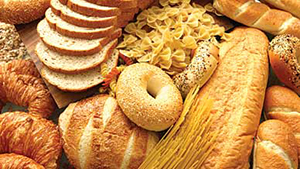 tests, in some instances, with regard to the impact gluten or wheat may have on your body.
tests, in some instances, with regard to the impact gluten or wheat may have on your body.
In order to get accurate results from this type of self-testing, you must eliminate 100 percent of any form of wheat or gluten with NO exceptions. Gluten can be hidden in foods and even used in cosmetics and other products that you do not suspect. Therefore, I would recommend that you check out this list to learn which foods and ingredients you need to avoid. You may also wish to refer to my article "Food Allergies - Could Gluten Be Your Problem?" for more information about gluten sources and ideas for gluten-free options
To know with greater certainly that the results of this trial period are accurate, it would be wise (though not imperative) to also avoid dairy products during the same time period. The reason is that proteins in dairy are very similar to the protein in gluten in the effect they can have on the body with regard to certain symptoms. 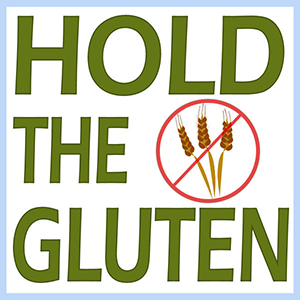 Although there are other common potential food allergens, gluten in grains and casein in dairy are the two biggest culprits responsible for the majority of people’s symptoms.
Although there are other common potential food allergens, gluten in grains and casein in dairy are the two biggest culprits responsible for the majority of people’s symptoms.
How long should the elimination diet last? Experts vary in their recommendations but the usual time period ranges from three to six weeks. The latter recommendation takes into account the fact that the immune system can still react up to six weeks after gluten is ingested due to its cumulative effects. However, even a trial period of as little as three weeks is usually enough to get a fairly good idea if symptoms are improving. According to one expert, antibodies (proteins the immune system makes in reaction to foods) take at least 21 to 23 days to turn over. If you do not faithfully avoid the food for at least that amount of time, you may not experience the full effect of eliminating it.
Reintroducing Tested Foods
In order to reintroduce foods you are sensitive to, eat them at least two to three times a day for three days to see if you notice a reaction over the next 72 hour period. Eat the food you are testing in its purest form without other added ingredients (i.e., don’t use bread to test wheat because bread also contains sugar and yeast that you may react to – use something like pasta or cream of wheat instead).
If you have an adverse reaction right away or within a shorter amount of time, immediately discontinue the food. If you have no reaction after three days, try another time by eating the same food again. Once again, notice how you feel. If you still notice no reaction, you may be fine to reincorporate that food back into your diet. Always leave at least three days in between the time you introduce each food if you are testing more than one type of food.
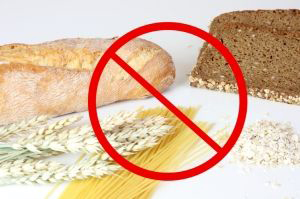 Any food to which you react to should be eliminated for a minimum of three months to give the immune system time to calm down and the gut time to heal. Depending on the degree of inflammation of the intestinal lining, it could take as long as nine to twelve months. Eventually, you may be able to tolerate the grain food again if you only have a mild non-celiac gluten sensitivity (those with full-blown celiac disease must continue to avoid gluten indefinitely). However, it is unlikely that your body can handle you eating it sooner than every four days, and that in small amounts in order to avoid an immune system reaction.
Any food to which you react to should be eliminated for a minimum of three months to give the immune system time to calm down and the gut time to heal. Depending on the degree of inflammation of the intestinal lining, it could take as long as nine to twelve months. Eventually, you may be able to tolerate the grain food again if you only have a mild non-celiac gluten sensitivity (those with full-blown celiac disease must continue to avoid gluten indefinitely). However, it is unlikely that your body can handle you eating it sooner than every four days, and that in small amounts in order to avoid an immune system reaction.
Testing for Gluten Sensitivity or Celiac Disease
In his article "Gluten - What You Don't Know Might Be Killing You", Dr. Mark Hyman gives specific information and guidelines with regard to lab tests for celiac and gluten intolerance:
"There are gluten allergy/celiac disease tests that are available through Labcorp or Quest Diagnostics. All these tests help identify various forms of allergy or sensitivity to gluten or wheat. They will look for:
- IgA anti-gliadin antibodies
- IgG anti-gliadin antibodies
- IgA anti-endomysial antibodies
- Tissue transglutaminase antibody (IgA and IgG in questionable cases)
- Total IgA antibodies
- HLA DQ2 and DQ8 genotyping for celiac disease (used occasionally to detect genetic suspectibility).
- Intestinal biopsy (rarely needed if gluten antibodies are positive–based on my interpretation of the recent study)
When you get these tests, there are a few things to keep in mind.
In light of the new research on the dangers of gluten sensitivity without full blown celiac disease, Dr. Hyman consider any elevation of antibodies significant and worthy of a trial of gluten elimination. Many doctors consider elevated anti-gliadin antibodies in the absence of a positive intestinal biopsy showing damage to be “false positives.” That means the test looks positive but really isn’t significant.
We can no longer say that. Positive is positive and, as with all illness, there is a continuum of disease, from mild gluten sensitivity to full-blown celiac disease. If your antibodies are elevated, you should go off gluten and test to see if it is leading to your health problems."
Gluten and Grain-Free Options
Going grain-free or even just staying clear of only gluten grains or wheat certainly does require learning to cook and dine out in different ways. However, it does not mean you have to suffer deprivation. You can find online or in special recipe books a wealth of recipes for making pancakes, muffins, breads, crackers  and various treats and desserts using substitutions like almond flour, coconut flour, cashews, etc. My personal favorites that I would highly recommend in the recipe book category are, Against All Grain - Delectable Paleo Recipes to Eat Well & Feel Great, Practical Paleo and Paleo Cooking from Elana's Pantry: Gluten-free, Grain-free, Dairy Free Recipes. You can find an abundance of recipe ideas on different websites by doing an internet search for grain-free recipes.
and various treats and desserts using substitutions like almond flour, coconut flour, cashews, etc. My personal favorites that I would highly recommend in the recipe book category are, Against All Grain - Delectable Paleo Recipes to Eat Well & Feel Great, Practical Paleo and Paleo Cooking from Elana's Pantry: Gluten-free, Grain-free, Dairy Free Recipes. You can find an abundance of recipe ideas on different websites by doing an internet search for grain-free recipes.
One caution regarding gluten-free products or recipes - just because it is gluten-free does not make it a healthy choice to eat. As previously mentioned, many gluten-free versions of breads and baked goods are loaded with pulverized starches such as rice starch, potato starch and tapioca starch that make them too low in fiber and too high in sugar and calories. Even the rice flour, used as a main ingredient in many types of gluten bread, is usually made from starchier white rice. Almond flour is a better option with three times the fiber and protein of rice flour. Coconut flour is very hypoallergenic as well as low glycemic and high in fiber.
Copyright © 2008-2015 Lucinda Bedogne, CNHP, CNC
Post Your Comment...
|
|
||||||||||||



